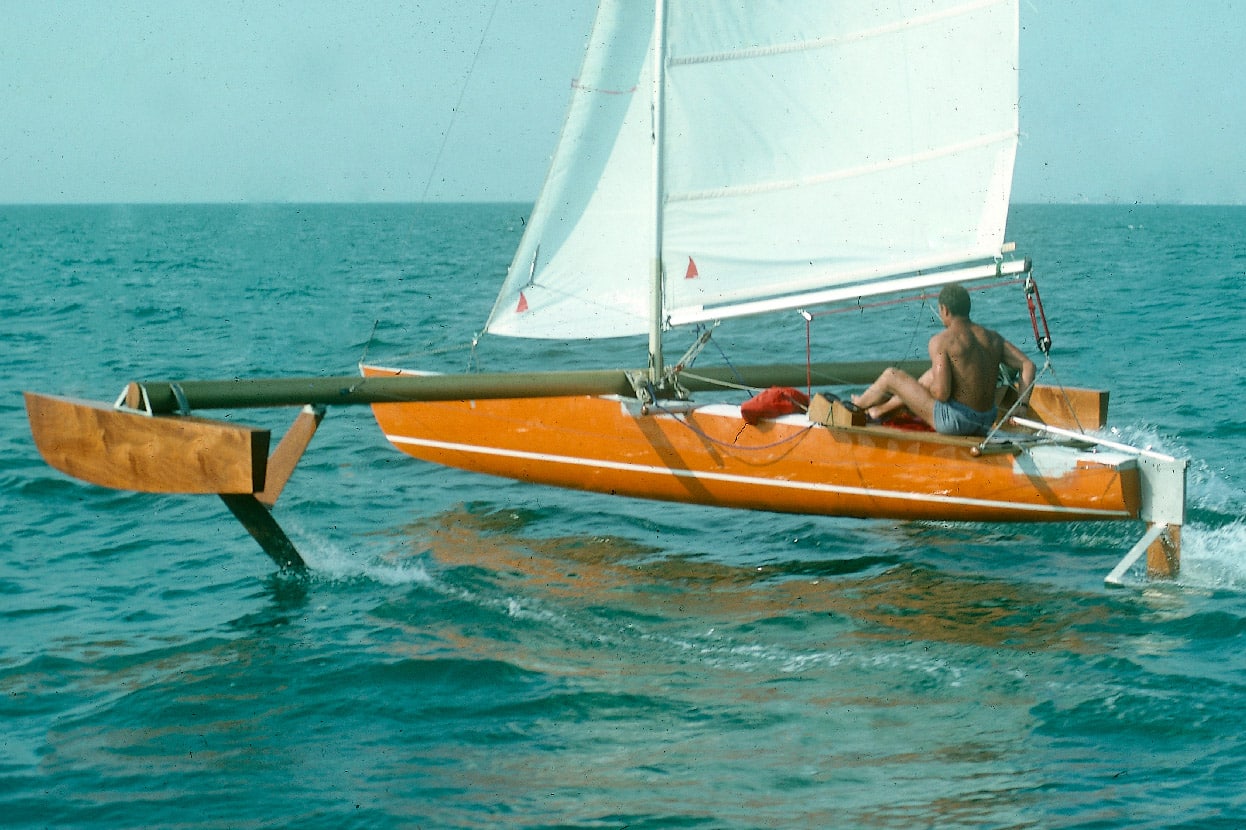If you are passionate about sailing, there is no doubt that you have already heard about foil. Especially in recent years. And if you’ve never heard of it before, this is the perfect article to find out. In both cases, you need to know more about story of foil.
Let’s give a little bit of context, so that you understand what we’re going to be talking about. Foil is a wing positioned under a support (hull or board), which aims to reduce friction with water to act on the speed and stability of the support thanks to the force of lift. It’s important to know that there are several shapes/types of foils.
The pink appendages of the BirdyFish, which you see in the photo below, are an example of foils (here in J).
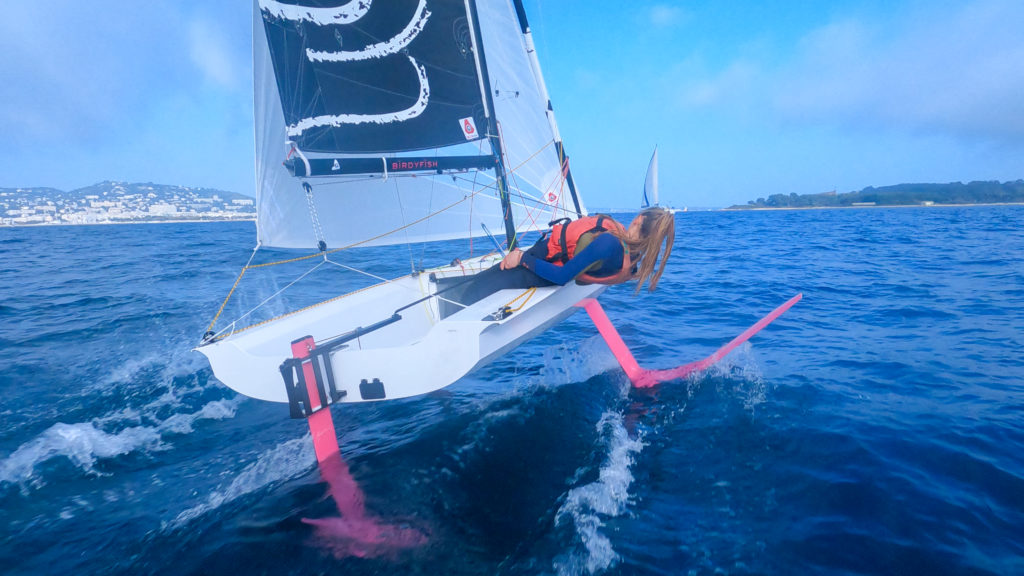
The question you must be asking is, what is its history ? By whom, how and when was it created ? When we see the interest in this practice, it seems legitimate to wonder where it comes from. So we’ll enlighten you on the foil story.
Researchers of the 19th century
We will begin by explaining that foil wasn’t actually created on a specific date, nor by a single person.
As far as we know, as early as the 19th century, around the 1860s, several researchers wanted to reproduce the principle of aircraft wings on ships. So they are trying to find a technology that can reduce the friction of a boat with the water, to increase its speed.
In 1861, Thomas Moy, a British engineer, carried out a first test. On the Surrey Canal in London, he sailed a canoe equipped with three horizontal wings arranged under the keel. Its purpose is to study the flow of fluids, here, water. Towed by a horse (yes they did like that at the time !), the latter takes speed and lifts out of the water. These are the beginnings of foil as we know it today.
A few years later, in 1869, Emmanuel Denis Farcot, an engineer, filed a certificate for a boat with several load-bearing planes. When standing horizontally, they tilt when the boat gains speed. This allows it to take off from the surface of the water.
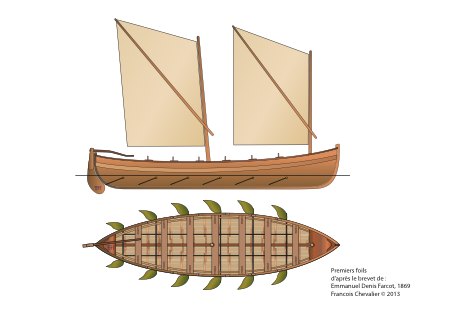
Copyright : François Chevalier
The story of foil is gaining speed
By the turn of the century, in the 1900s, many people were studying this subject. The story of foil will take an interesting turn.
Have you ever heard of Enrico Forlanini ? He’s an Italian engineer and inventor. He’s one of the major players in the story of foil. In 1904, he filed a patent for a motorboat with foils. This was one of the first hydrofoils. In 1911, the Idroplano No.7 he designed reached 38 knots, or 75km/h !
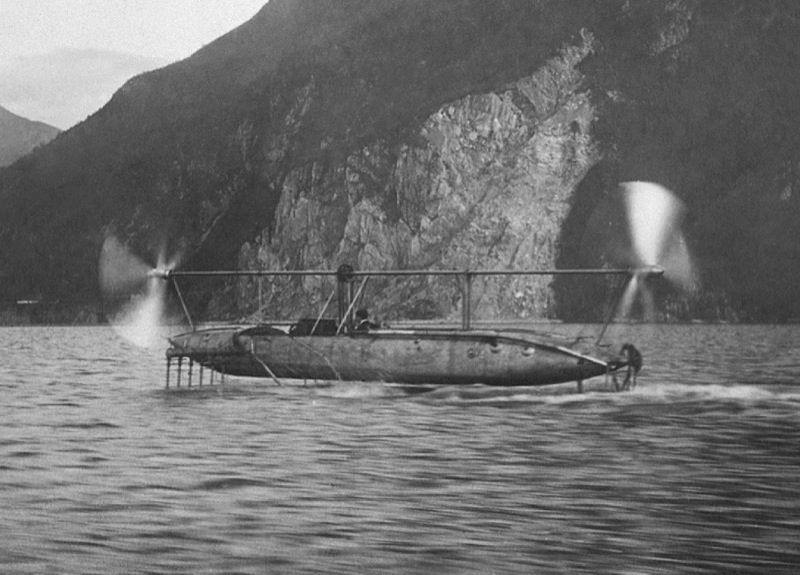
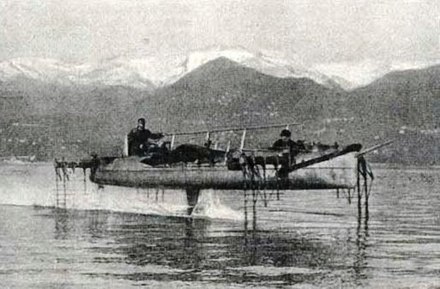
30 years later, in the 1950s, Gordon Baker’s project was funded by the US Navy. He would like to market a foil sailboat. After 17 years of research, the monitor is born. Gordon Baker can finally fly his sailboat with his hands on a steering wheel. (Yes, yes, you read right)
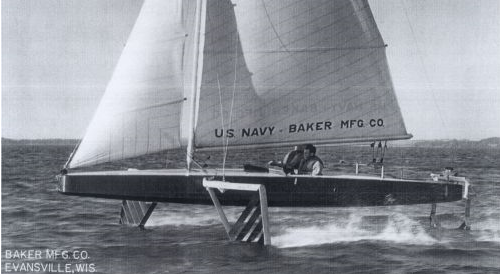
Copyright : Baker MFG & CO
Telling you the story of foil without talking to you about Eric Tabarly would be a mistake ! He’s another major actor of the latter. French sailor, passionate about ocean racing, he won several important races. In 1968, he crossed the Atlantic in 10 days and 11 hours. He soon embarked on a new project : building the Paul Ricard. After several years of research, the latter was launched in 1979. And it was on board in 1980 that he broke the record for crossing the Atlantic in 10 days, 5 hours and 14 minutes. Eric Tabarly made a major contribution to the story of foil by participating in its democratization.
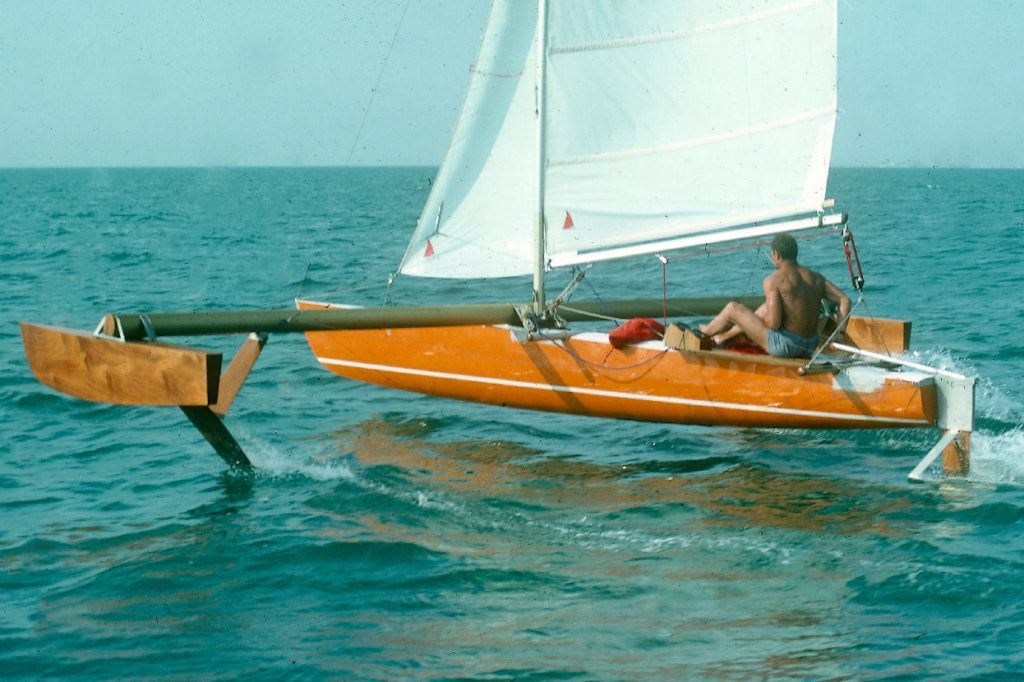
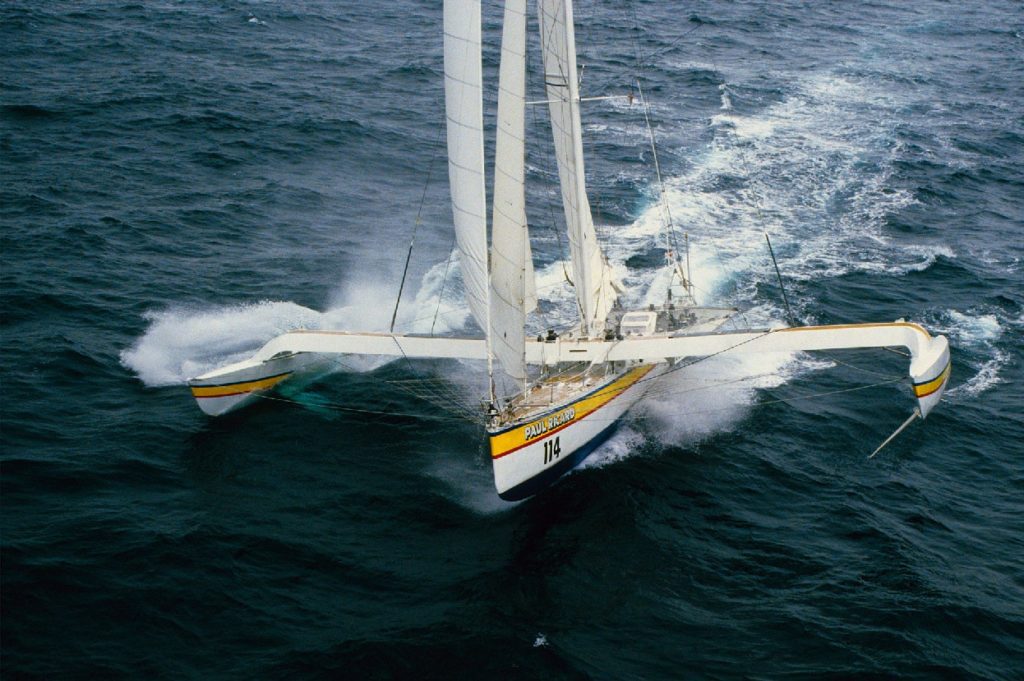
Some time later, Alain Thébault, french navigator and boat designer, arrived in the project. He directed the construction of the Hydrofoil, a trimaran designed by Eric Tabarly in the 1990s. On 4 September 2009, the latter set a record sailing speed of 51.36 knots at Hyères.
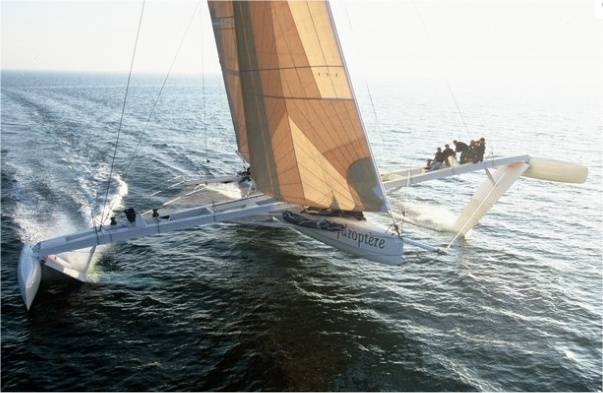
But in 2012, this sailing speed record was shattered by the sailrocket2, a foil boat, with a speed of 65.45 knots !
Foil has good wind
After all these constructions, and these records, foil slowly begins to attract attention.
And it is the America’s Cup that will go first and help democratize foil. In 2013, for the first time ever, the 34th edition of the America’s Cup hosted catamarans with foils.
The Vendée Globe will soon follow the trend. It was in 2016 that the skippers of the Vendée Globe had the choice to equip their boat with foils. That year, 7 boats from the competition were equipped with them.
Foil is therefore in full democratization at this time. It’s becoming known and applies to more and more discipline. We see the wingfoil, the kitefoil, the surf foil, the sup foil, or else the wake foil.
As the story of foil doesn’t end there, in 2021, the nacra 17 foils in C makes its arrival at the Tokyo Olympics. And in 2024, 50% of the sailing events at the Paris Games will be with foils : IQfoil, kite and nacra 17.

Copyright : Jesus Renedo / BPCE
The beautiful story of foil
As you can see, the story of foil spans more than a century and isn’t going to stop. It has seen many people involved, each of whom has contributed to it at their own level. We have presented you a few stages in the story of foil that we find important. If you want to go even further on this topic, here are some articles you can consult :
We hope that you now understand a little better the foil story, and how it managed to win in the sport. With the new foil holders that continue to appear, there is no doubt that we will still hear a lot about it, and that it has not finished surprising us.
For any request for information or quotation, do not hesitate to contact us.

